8th Air Force 250
6 March 1944
Michael P. Faley-100th Bomb Group Historian, www.100thbg.com
Object Number - FRE 5692 - B-17 Flying Fortresses, (LL-F, serial number 42-97467) of the 91st Bomb Group, (OJ-G, serial number 42-97212) of the 96th Bomb Group and (LD-D,...
Description
The industrial areas of Berlin and Genshagen, Germany are the primary targets for this mission. A combined force of 730 heavy bombers are despatched from 1st, 2nd and 3rd Air Divisions. The despatch from 3rd Air Division bombs Targets of Opportunity in the Berlin area. Bomber gunner claims for the entire 3 Division formation were bundled in the source data as being 97-28-60 (probably exaggerated). A total of 69 aircraft Failed to Return, a loss rate of 9.452%. While that loss rate was considered very high, the strategy of attacking high profile targets in order to draw up the Luftwaffe does pay benefits with 179-36-93 of German aircraft claimed. It is not the loss of aircraft that is so devestating to the Luftwaffe but the loss of pilots.
Mission summary follows:
1st Air Division: A force of 262 B-17s from: 91BG; 92BG; 303BG; 305BG; 306BG; 351BG; 379BG; 381BG; 384BG; 401BG; 457BG; and 482BG are despatched. 248 aircraft are effective on Berlin, Germany. 19 aircraft Failed to Return (FTR) - 60KIA 117POW(1DIC) 4EVD 10INT (Sweden). 4 aircraft were Damaged Beyond Repair (DBR) in crashes (3 on return 1 due to pilot error shortly after take off) - 1KIA 3POW (baled out over enemy territory) 1EVD 35RTD. 172 aircraft were damaged. 2 airmen in returning aircraft were KIA and another 8 were WIA.
Bomber gunner claims of 97-28-60 are bundled for all 3 Air Divisions. There are no other losses, casualties or claims in this element.
3rd Air Division: A combined force of 242 B-17s from: 94BG; 95BG; 96BG; 100BG; 385BG; 388BG; 390BG; 447BG; and 352BG are despatched. A total of 226 aircraft were effective on the industrial areas of the following German cities as Targets of Opportunity (TOs) (Source data does not state how many were effective on each target): Templin, Verden, Kalkeberge, Potsdam, Oranienburg, and Wittenberg. 34 aircraft Failed to Return (FTR) - 95KIA 221POW(1DIC) 5EVD 20INT (Sweden). 3 aircraft were Damaged Beyond Repair (DBR) in crash landings upon return - 1KIA 7POW (baled out) 1EVD 31RTD. 121 aircraft were damaged. 1 airman in a returning aircraft was KIA and 15 others were WIA. There are no other losses or casualties in this element.
2nd Air Division: A combined force of 226 B-24s from: 44BG; 93BG; 389BG; 392BG; 445BG; 446BG; 448BG; 453BG; and 458BG are despatched to bomb the aircraft factories at Genshagen, Germany. 198 aircraft are effective on the following targets (source data does not indicate how many were effective on each target: Genshagen (P); Berlin (S) and Potsdam as a Target of Opportunity (TO). 58KIA 82POW(1DIC) 6EVD 4RTD (rescued by ASR) 10 INT (Sweden). 1 aircraft is Damaged Beyond Repair (DBR) when it crashed on take off with a full bomb load and explodes - 10KIA. 5 airmen in returning aircraft are KIA and another 8 are WIA. There are no other losses or casualties in this element.
Mission Details
BERLIN (Secondary)
Description: AIRCRAFT FACTORIES
Aircraft Type: B-24 Liberator
Notes: It has not been determined which 2nd Bomb Division Groups bombed this target.
BERLIN/GENSHAGEN (Primary)
Description: INDUSTRIAL AREA
Aircraft Type: B-17 Flying Fortress
Notes: Fighter opposition is some of the fiercest of the war and the 8th Air Force experiences the highest losses for a single day in combat, but the bombers and fighter escorts take a great toll of the Luftwaffe. Groups participating are those of the 1st Bomb Division. Bomber gunner claims for all attacking units are bundled under this element. 457th BG MISSION NO. 8 - BERLIN, GERMANY 6 MARCH 1944 Eighteen aircraft returned to Erkner and the V.K.F. ball bearing works for the third time. Fourteen Combat Wings were dispatched to attack Berlin targets. The Group comprised the 94th Combat Wing's high box. Captain Fred A. Spencer was Air Commander and Lt. J. L. Smith was pilot. Near Magdeburg the Group encountered heavy and vigorous enemy fighter opposition, principally by Me-210s, Me- 109s and Ju-88s. Two crews, those of Lt. Roy E. Graves and Lt. Eugene H. Whalen, were lost during the encounter. Lt. Whalen, flying in the high box, was a victim of a German Me-109 fighter; his aircraft exploded and fell into the low box, crashing into Lt. Graves. Only the tail gunner of the Graves crew survived. On reaching the IP, the groups formed in trail. When the Wing Leader dropped bombs the 457th lead plane did not observe the lead group's release. On withdrawal from the target a bomb run was made on the oil refinery at Verden, near Bremen. Results were poor. Antiaircraft opposition was heavy in the Berlin area. In addition to the two planes lost, five aircraft sustained damage from flak and one other sustained fighter damage. Crews reported observing a total of thirteen bombers in the Division formation being shot down. Sixty-nine bombers were lost in the day's operation.

- Unit Hierarchy: Group
- Air Force: Eighth Air Force
- Type Category: Bombardment

- Unit Hierarchy: Group
- Air Force: Eighth Air Force
- Type Category: Bombardment

- Unit Hierarchy: Group
- Air Force: Eighth Air Force
- Type Category: Bombardment

- Unit Hierarchy: Group
- Air Force: Eighth Air Force
- Type Category: Bombardment
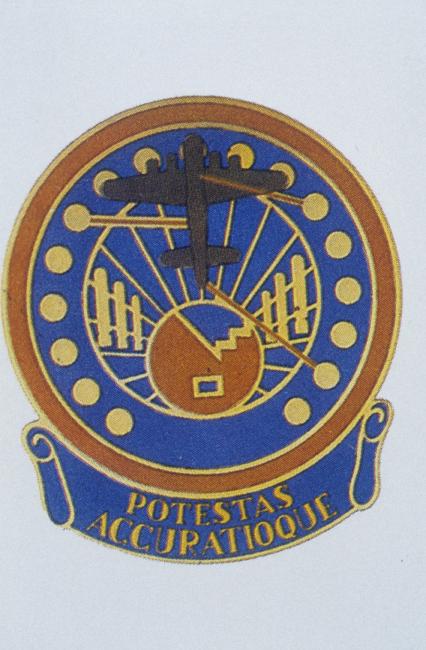
- Unit Hierarchy: Group
- Air Force: Eighth Air Force
- Type Category: Bombardment
Mission Statistics
- Tonnage Dropped: 459.50
- People killed in action: 63
- People wounded in action: 8
- People evaded: 5
- Prisoners of war: 120
- People died in captivity: 1
- People interned: 10
- People returned to duty: 35
- Enemy aircrafts destroyed by bomber: 97
- Enemy aircrafts probably destroyed by bomber: 28
- Enemy aircraft damaged by bomber: 60
- Aircraft sent: 262
- Aircraft effective: 248
- Aircraft missing in action: 19
- Aircraft damaged beyond repair: 4
- Aircraft damaged: 172
GENSHAGEN (Primary)
Description: AIRCRAFT FACTORIES
Aircraft Type: B-24 Liberator
Notes: Groups participating are those of 2nd Bomb Division.

- Unit Hierarchy: Group
- Air Force: Eighth Air Force
- Type Category: Bombardment

- Unit Hierarchy: Group
- Air Force: Eighth Air Force
- Type Category: Bombardment
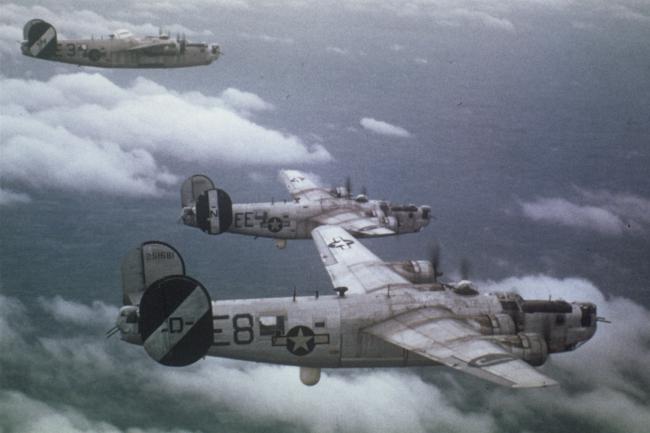
- Unit Hierarchy: Group
- Air Force: Eighth Air Force
- Type Category: Bombardment

- Unit Hierarchy: Group
- Air Force: Eighth Air Force
- Type Category: Bombardment

- Unit Hierarchy: Group
- Air Force: Eighth Air Force
- Type Category: Bombardment
Mission Statistics
- Tonnage Dropped: 533.00
- People killed in action: 83
- People evaded: 6
- Prisoners of war: 82
- People died in captivity: 1
- People interned: 10
- People returned to duty: 4
- Aircraft sent: 226
- Aircraft effective: 198
- Aircraft missing in action: 16
- Aircraft damaged beyond repair: 1
- Aircraft damaged: 54
Description: BOMB TARGETS OF OPPORTUNITY
Aircraft Type: B-17 Flying Fortress
Notes: It has not been determined which 3rd Bomb Division Groups bombed this target.
ORANIENBURG (Opportunistic)
Description: BOMB TARGETS OF OPPORTUNITY
Aircraft Type: B-17 Flying Fortress
Notes: It has not been determined which 3rd Bomb Division Groups bombed this target.
POTSDAM (Opportunistic)
Description: AIRCRAFT FACTORIES
Aircraft Type: B-24 Liberator
Notes: It has not been determined which 2nd Bomb Division Groups bombed this target.
POTSDAM (Opportunistic)
Description: BOMB TARGETS OF OPPORTUNITY
Aircraft Type: B-17 Flying Fortress
Notes: It has not been determined which 3rd Bomb Division Groups bombed this target.
TEMPLIN (Opportunistic)
Description: BOMB TARGETS OF OPPORTUNITY
Aircraft Type: B-17 Flying Fortress
Notes: The 100th Bomb Group lost 15 aircraft on this raid, the highest of any group on a single mission in the 8th Air Force. They became known as "The Bloody Hundredth." Groups participating are those of 3rd Bomb Division. Statistics bundled for all 3rd Bomb Division targets. Groups participating are those of 3rd Bomb Division.
![Three airmen of the 100th Bomb Group, Lieutenant Kenneth Menzie, Lieutenant Donald Strout and Lieutenant Norman Scott, plan the route they will take during the next mission in their B-17 Flying Fortress (serial number 42-30380). Image stamped on reverse: 'Reviewed and passed U.S. Army 23 Aug 1943 Press Censor E.T.O. U.S.A.' [stamp]'. Passed for publication 23 August 1943 INTLD 16 General Section Press Censorship Bureau '[stamp], 'Associated Press' [stamp] and '280035.' [Censor no.] Printed caption on reve](https://assets.americanairmuseum.com/s3fs-public/styles/max_650x650/public/freeman/media-378743.jpg?itok=oPPVVi6c)
- Unit Hierarchy: Group
- Air Force: Eighth Air Force
- Type Category: Bombardment
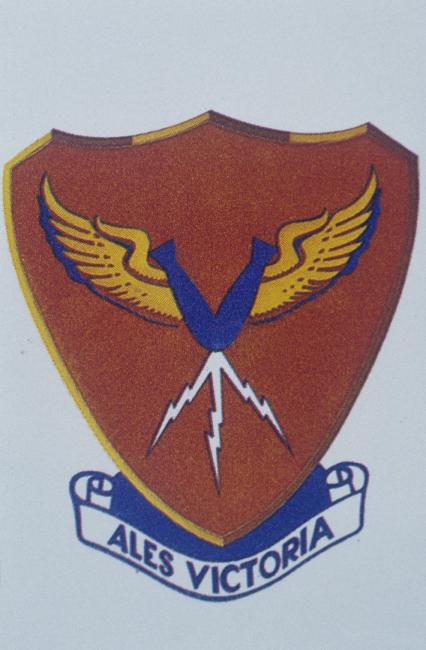
- Unit Hierarchy: Group
- Air Force: Eighth Air Force
- Type Category: Bombardment
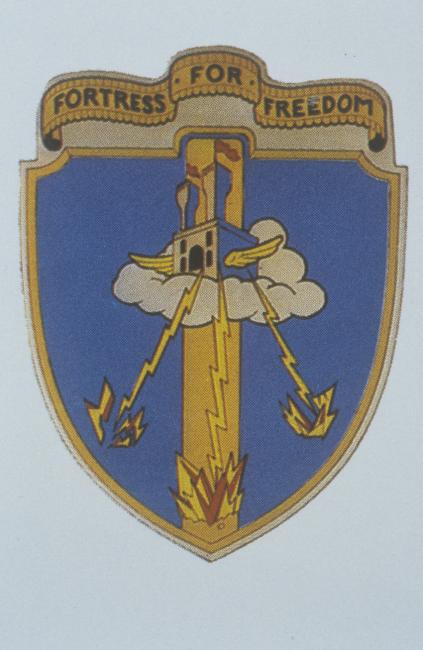
- Unit Hierarchy: Group
- Air Force: Eighth Air Force
- Type Category: Bombardment

- Unit Hierarchy: Group
- Air Force: Eighth Air Force
- Type Category: Bombardment
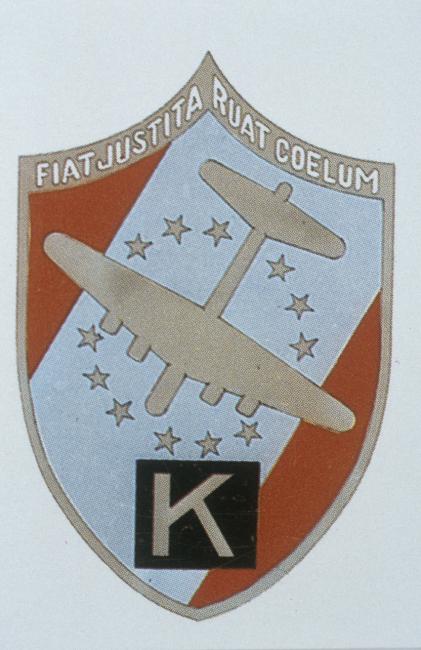
- Unit Hierarchy: Group
- Air Force: Eighth Air Force
- Type Category: Bombardment
Mission Statistics
- Tonnage Dropped: 655.50
- People killed in action: 96
- People evaded: 5
- Prisoners of war: 221
- People died in captivity: 1
- People interned: 20
- People returned to duty: 29
- Aircraft sent: 242
- Aircraft effective: 226
- Aircraft missing in action: 34
- Aircraft damaged beyond repair: 4
- Aircraft damaged: 121
Description: BOMB TARGETS OF OPPORTUNITY
Aircraft Type: B-17 Flying Fortress
Notes: It has not been determined which 3rd Bomb Division Groups bombed this target.
WITTENBURG (Opportunistic)
Description: BOMB TARGETS OF OPPORTUNITY
Aircraft Type: B-17 Flying Fortress
Notes: It has not been determined which 3rd Bomb Division Groups bombed this target.
Connections
See how this entry relates to other items in the archive by exploring the connections below.
People
- Military/Civilian/Mascot: Military
- Nationality: American
- Unit: 384th Bomb Group 544th Bomb Squadron
- Service Numbers: O-798297
- Highest Rank: First Lieutenant
- Role/Job: Pilot

- Military/Civilian/Mascot: Military
- Nationality: American
- Unit: 100th Bomb Group 349th Bomb Squadron
- Highest Rank: Second Lieutenant
- Role/Job: Pilot
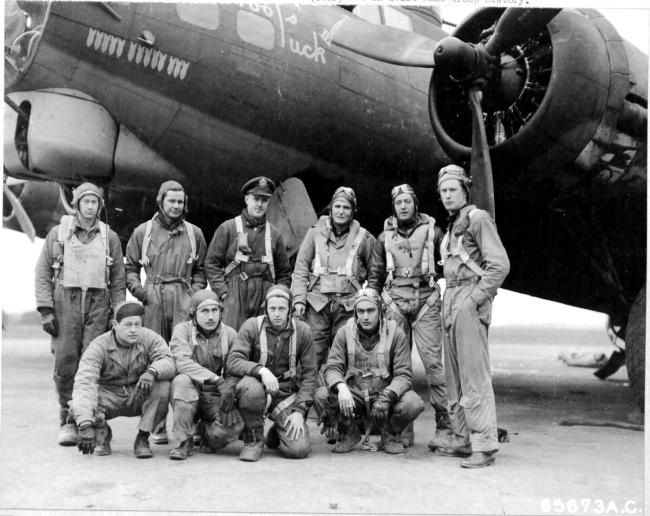
- Military/Civilian/Mascot: Military
- Nationality: American
- Unit: 401st Bomb Group 612th Bomb Squadron
- Service Numbers: O-735233
- Highest Rank: First Lieutenant
- Role/Job: Navigator / Bombardier
- Military/Civilian/Mascot: Military
- Nationality: American
- Unit: 401st Bomb Group 615th Bomb Squadron
- Highest Rank: Staff Sergeant
- Role/Job: waist gunner

- Military/Civilian/Mascot: Military
- Nationality: American
- Unit: 458th Bomb Group 754th Bomb Squadron
- Service Numbers: O-805152
- Highest Rank: Second Lieutenant
- Role/Job: Pilot
Aircraft

- Aircraft Type: B-24 Liberator
- Nicknames: Jayhawker
- Unit: 458th Bomb Group 752nd Bomb Squadron

- Aircraft Type: B-24 Liberator
- Unit: 458th Bomb Group 755th Bomb Squadron
- Aircraft Type: B-24 Liberator
- Nicknames: Ye Olde Hellgate
- Unit: 44th Bomb Group 66th Bomb Squadron 458th Bomb Group 753rd Bomb Squadron

- Aircraft Type: B-24 Liberator
- Nicknames: Bo
- Unit: 458th Bomb Group 752nd Bomb Squadron

- Aircraft Type: B-24 Liberator
- Nicknames: Flak Magnet
- Unit: 458th Bomb Group 753rd Bomb Squadron
Revisions
Operation Research Section - HQ Eighth Air Force
Operation #250 - Combat Damage Report
Operation Research Section
Headquarters Eighth Air Force
15 March 1944
Operation Number 250 - 6 March 1944
Operational Research Section - HQ 8th Air Forice
Operation #250
Combat Damage Report
Lee Cunnigham 19-Feb-2016. Added bomber gunner claims for ALL attacking units to the Berlin/Genshagen element statistics based on "The Mighty Eighth War Diary", Roger A. Freeman
Lee Cunningham 19-Feb-2016. Added Mission Narrative based on "The Mighty Eighth War Diary", Roger A. Freeman; losses and other statistics confirmed from MACRS and "Losses of the 8th & 9th Air Forces", Stan Bishop & John A. Hey MBE.
Mission detail added courtesy of Diane Reese - http://www.457thbombgroup.org/Narratives/MA8.HTML
Lee Cunningham, 8th Air Force missions research database / Stan Bishop's 'Losses of the US 8th and 9th Air Forces', the Combat Chronology of the US Army Air Forces and the work of Roger Freeman including the 'Mighty Eighth War Diary'.





